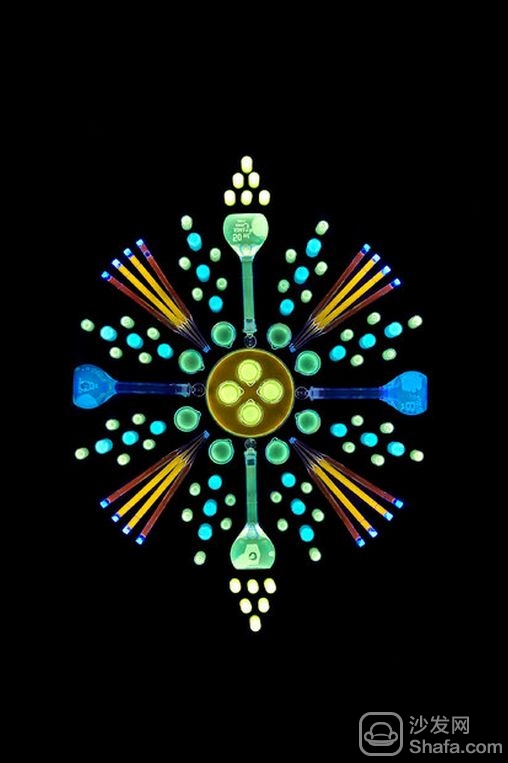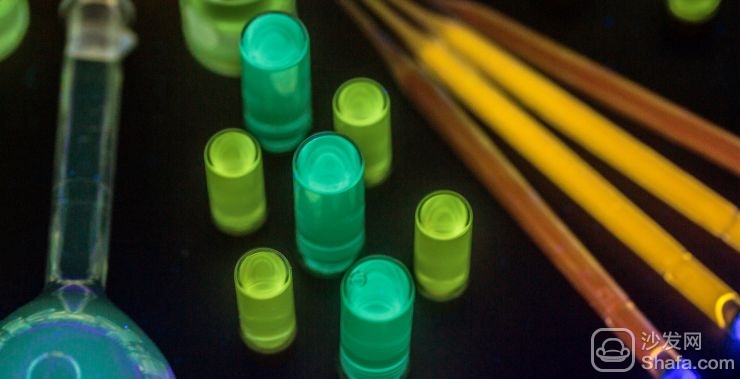At CES2015, new products introduced by Samsung, TCL, LG, Hisense and many other color TV manufacturers all apply quantum dot technology without exception. At this year's CES show, although the expected explosive growth has not been achieved, quantum dot TV It also continued the momentum of the previous year.
Peng Xiaogang, a chemical expert and professor at Zhejiang University, even stated that “quantum dots are a good luminescent material that humans have discovered so far. Quantum dot electroluminescence will be an advantageous contender for next-generation display technologies.â€
So what exactly is a quantum dot?
A quantum dot is a material with a diameter of 2-10 nanometers. When stimulated by electricity or light, it emits monochromatic light according to its diameter, and the color is very pure. As a kind of LED TV, quantum dot TV can have a wider color gamut display and more precise color control, and its service life and energy saving are also stronger than ordinary TV.
However, due to technical limitations, its cost is still relatively expensive. However, who says that programmers can change the world? Chemists can also!
Enzymes can be supplied to metals to make quantum dots
In the journal of the National Academy of Sciences last week, five chemists at Lehigh University proposed an extremely cost-effective method for manufacturing quantum dots: they feed the metal with a single enzyme that is extracted from certain bacteria.

We can see that under the LED illumination, small crystals can emit different colors of light.
One of the authors, Bryan Berger, said he came up with this method by chance, and the discovery was put forward by a Pennsylvania hospital staff in 2011. He said that there is a super bacteria steeno that can grow on metal surfaces.
At that time, the staff of the hospital expressed some concern because there was no effective antibiotic to deal with the bacteria. So they turned to Bryan Berger for help.
Dr. Berger discovered after research that the bacteria actually absorb the charge from the metal surface and emit microcrystalline particles. Although he did not know how to inhibit the growth of bacteria, he thought he could use it to make quantum dots.
After the experiment, the researchers found that this method is feasible and has published academic articles in 2015. “As an engineer, this news is exciting; however, for the medical community, this news is not without worry.â€
Later they discovered a way to extract just the enzymes that play a key role in bacteria and they can do the same thing.
Berger and other researchers have implemented water-based media to create quantum dots at room temperature, and can control the size of crystals to present different colors.
So soon you need to change television?
According to rumors, Apple had previously launched the iMac with a quantum dot screen, but due to the material's toxic environment, it gave up its plan. Warren Chan of the University of Toronto said that although the new method has solved the toxicity problem and it is more cost-effective, the quality of quantum dots it produces is still far from that of traditional methods.

At the same time, such quantum dots also have important meanings in the medical field. For example, they can be used to mark tumors and diseases, and they can also increase the efficiency of solar cells. This is popular among green energy producers. If it is technically possible to increase the brightness of these quantum dots, it is bound to have a broader application space.
As for the hospital, Berger did not forget the original intention of the hospital. He was also looking for ways to inhibit steno's reproduction on the metal surface.
Peng Xiaogang, a chemical expert and professor at Zhejiang University, even stated that “quantum dots are a good luminescent material that humans have discovered so far. Quantum dot electroluminescence will be an advantageous contender for next-generation display technologies.â€
So what exactly is a quantum dot?
A quantum dot is a material with a diameter of 2-10 nanometers. When stimulated by electricity or light, it emits monochromatic light according to its diameter, and the color is very pure. As a kind of LED TV, quantum dot TV can have a wider color gamut display and more precise color control, and its service life and energy saving are also stronger than ordinary TV.
However, due to technical limitations, its cost is still relatively expensive. However, who says that programmers can change the world? Chemists can also!
Enzymes can be supplied to metals to make quantum dots
In the journal of the National Academy of Sciences last week, five chemists at Lehigh University proposed an extremely cost-effective method for manufacturing quantum dots: they feed the metal with a single enzyme that is extracted from certain bacteria.

We can see that under the LED illumination, small crystals can emit different colors of light.
One of the authors, Bryan Berger, said he came up with this method by chance, and the discovery was put forward by a Pennsylvania hospital staff in 2011. He said that there is a super bacteria steeno that can grow on metal surfaces.
At that time, the staff of the hospital expressed some concern because there was no effective antibiotic to deal with the bacteria. So they turned to Bryan Berger for help.
Dr. Berger discovered after research that the bacteria actually absorb the charge from the metal surface and emit microcrystalline particles. Although he did not know how to inhibit the growth of bacteria, he thought he could use it to make quantum dots.
After the experiment, the researchers found that this method is feasible and has published academic articles in 2015. “As an engineer, this news is exciting; however, for the medical community, this news is not without worry.â€
Later they discovered a way to extract just the enzymes that play a key role in bacteria and they can do the same thing.
Berger and other researchers have implemented water-based media to create quantum dots at room temperature, and can control the size of crystals to present different colors.
So soon you need to change television?
According to rumors, Apple had previously launched the iMac with a quantum dot screen, but due to the material's toxic environment, it gave up its plan. Warren Chan of the University of Toronto said that although the new method has solved the toxicity problem and it is more cost-effective, the quality of quantum dots it produces is still far from that of traditional methods.

At the same time, such quantum dots also have important meanings in the medical field. For example, they can be used to mark tumors and diseases, and they can also increase the efficiency of solar cells. This is popular among green energy producers. If it is technically possible to increase the brightness of these quantum dots, it is bound to have a broader application space.
As for the hospital, Berger did not forget the original intention of the hospital. He was also looking for ways to inhibit steno's reproduction on the metal surface.
Heavy Duty Connector,Battery Magnet Connector,Heavy Duty Module Electrica,High Voltage Electrical Connectors
Kunshan SVL Electric Co.,Ltd , https://www.svlelectric.com
